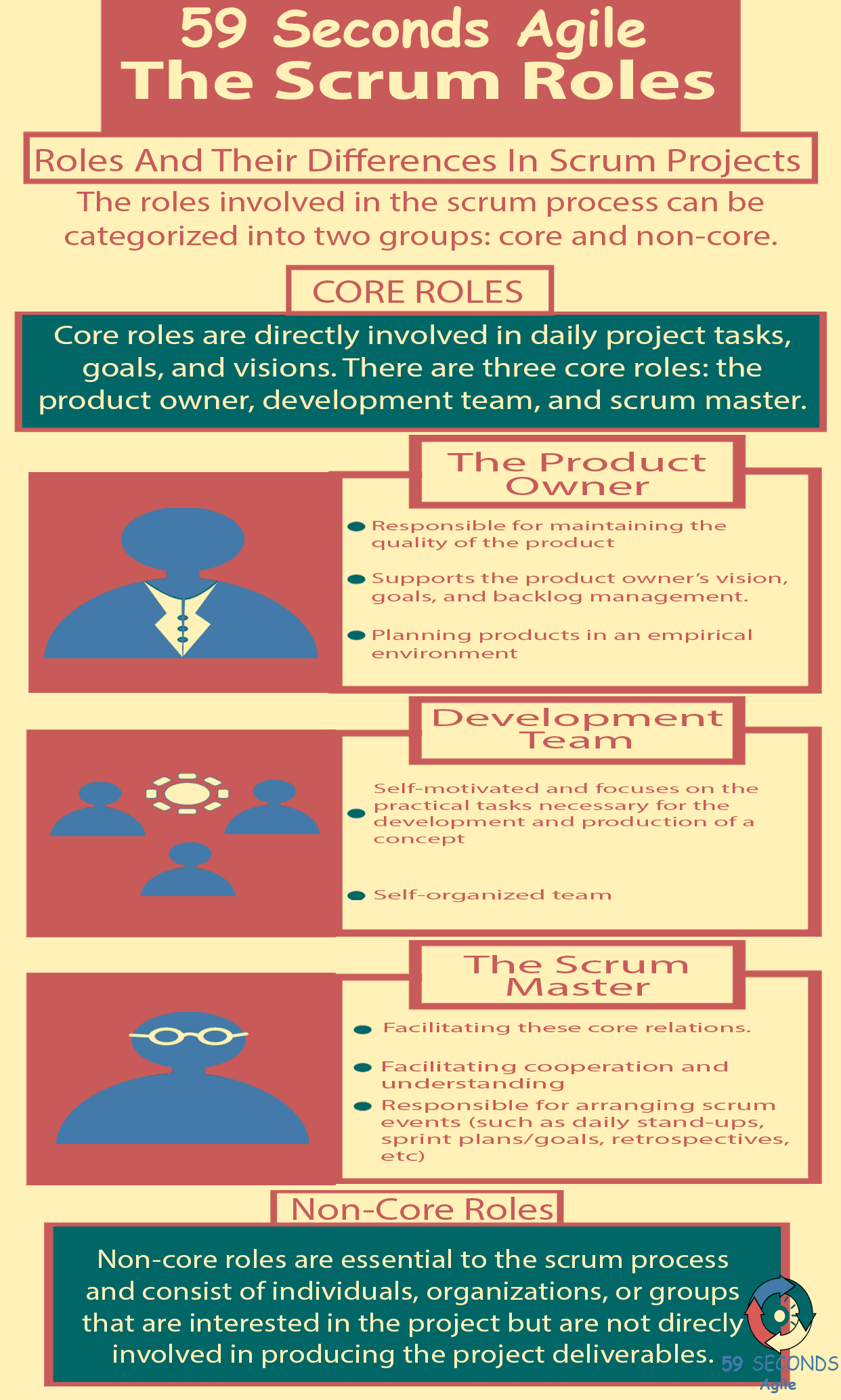This article looks to discuss the Scrum Roles and Responsibilities with the Scrum Master. Th article covers how and when the Scrum Master interacts with the different members of the Scrum Team. The article discusses what the core role in scrum are and how many core role in Scrum.

What are Scrum Roles? The Core Scrum Roles and The Scrum Masters
Scrum is a useful tool for the creation, maintenance, plan, and execution of diverse products and services. The tool consists of important roles, rules, events, and artefacts. These tools are used to create “a framework within which people can address complex adaptive problems, while productively and creatively delivering products of the highest possible value”.
Scrum Master and the Non Core Scrum Roles and Responsibilities
The Scrum Master is at the core of project success. They are involved at each stage and helps remove impediments or issues that may hinder success. The Scrum Master is a key promoter and translator of the framework. They are central to helping the scrum team understand the Scrum principles, practices, rules, and values. A central responsibility of the Scrum Master is maintaining, coordinating, and facilitating communication. They do this between each of the core and non-core roles.
What are Scrum Roles and What Are their Differences in Scrum Projects
Understanding and applying roles within scrum is central to project success. The roles involved in the scrum process can be categorized into two groups: core and non-core. Core roles consist of the scrum team members involved on a daily basis. There are also non-core roles which consist of external persons, organizations, or groups that are interested in or involved in the project. The non-core roles are less hands-on than core members. The team members, and how they are related to the Scrum Master, will be discussed below.

Core Role In Scrum
Core roles can be understood as the project team, which typically includes roles that are directly involved in daily project tasks, goals, and visions. There are three core roles: the product owner, development team, and scrum master.
Firstly, the product owner is often the visionary of a product or project. They may present an idea and organize a group to work on this idea. They are responsible for maintaining the quality of the product and keeps an eye on the big picture. The Scrum Master should support the product owner’s vision, goals, and backlog management. This can be done through planning products in an empirical environment, translating visions to the scrum team, communicating daily progress to the product owner, and enabling project agility.
Our Favourite Agile Books
We found these books great for finding out more information on Agile Scrum:
Secondly, the development team is self-motivated and focuses on the practical tasks necessary for the development and production of a concept. The Scrum master aids the team by coaching, promoting self-organization, removing barriers, facilitating communication, and communicating with external stakeholders when additional expertise is necessary.
Team Responsibilities
The Scrum Master’s responsibilities rests heavily in facilitating these core relations. For example, if the development team and product owner develop misaligned visions as the project transforms, the Scrum Master should take the lead in facilitating cooperation and understanding on both sides. If the development team has computer malfunctions or a lack of equipment, the Scrum Master may take the appropriate measures to solve these issues so that processes can continue and deadlines can be met. Additionally, the Scrum Master is responsible for arranging scrum events (such as daily stand-ups, sprint plans/goals, retrospectives, etc) and should remain aware of the development team’s progress and needs surrounding these events.
The Scrum Master’s role does not end at facilitating relations among the core roles, they must also facilitate and manage relations among non-core roles.

